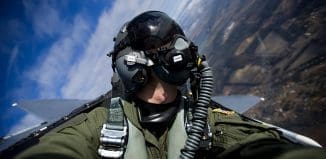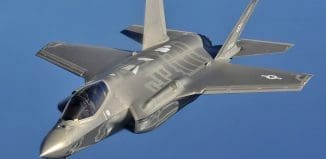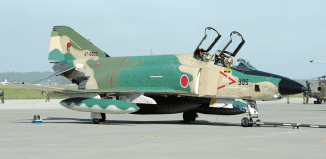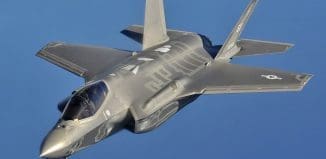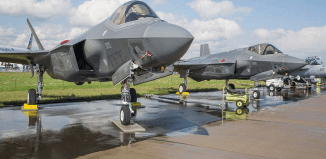Latest Pilot Helmets Provide Innovative New Point Of View
This post is also available in:  עברית (Hebrew)
עברית (Hebrew)
The U.S. Department of Defense is upgrading the “look and shoot” helmet displays used by F-35, F-15, F-16 and F-18 pilots. F-35s are getting the latest version (the U.S.–Israeli HMDS, Helmet-Mounted Display System, originally produced by Elbit Systems) of these smart helmets and that will include a new VR (Virtual Reality) feature. These new helmets can display graphics in real time and the VR feature enables the helmet display to show what is beneath the aircraft (via cameras on the fuselage beneath the cockpit) when the pilot looks down with this VR feature turned on. This can be very useful in combat, ground attack or simply landing. This feature proved particularly effective when operating at night. HMDS is also closely integrated with the very capable F-35 avionics and thus will enable to the F-35 to be the first modern jet without a standard HUD (mounted above the cockpit instruments in front of the pilot).
Basic features of these “look and shoot” helmet displays include information displayed on the visor, and sensors in the helmet, which enables the pilot to look at the target (either another aircraft, or something on the ground) and fire a weapon (missile) that will go after the target being looked at. Recent upgrades allow the pilot to also put “head up display” (HUD) information on the helmet visor visual system. This is a big advantage in air combat, where it’s always been a problem having to look down at some display or instrument reading, and take your eyes off the surrounding air space. This makes it safer for pilots (especially when flying on the deck, at high speed) and in combat. Another recent enhancement allows each pilot to customize what information is shown on their helmet visor.
These helmets are one of the major, and little mentioned, revolutions in air combat. Enabling a pilot to “look and shoot” as well as keep their heads up more of the time and more quickly make decisions in air-to-air combat is a big deal. This dramatic change has not gotten much publicity because there has been such little air-to-air combat in the last few decades. But in realistic training exercises the difference has been noted. This has been documented in detail (and classified) in the United States because since the 1970s, American combat pilots have done regular training in instrumented air space, where every move by aircraft and decision by pilots is recorded. This provides all sorts of data on how the aircraft and pilot performance has evolved over the decades. The new helmets have turned out to be a major innovation in air combat.






